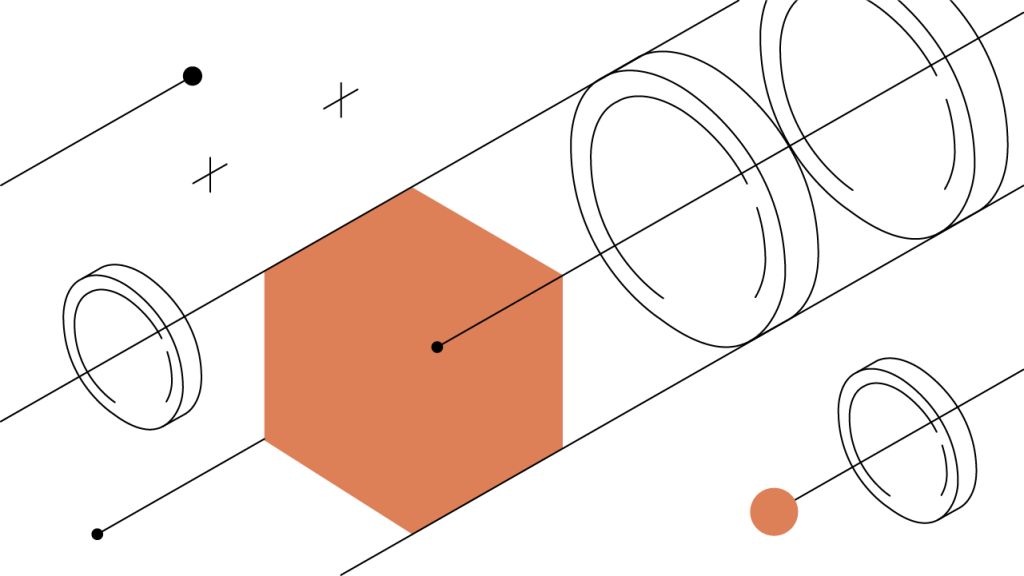RenVM: Bringing Bitcoin to Decentralized Finance
In keeping with the ethos of DeFi, RenVM utilized an innovative security model to unlock inter-blockchain liquidity in a permissionless, decentralized manner.
By , Co-Founder & CEO, Ren
Updated October 10, 2023 • 4 min read

Summary
RenVM is a decentralized protocol for the creation of Ethereum-based tokens that represent non-Ethereum-based cryptocurrencies such as Bitcoin, Bitcoin Cash, and Zcash. These tokenized representations open the Ethereum-specific DeFi ecosystem to other cryptocurrency markets, thus enabling inter-chain token liquidity and interoperability.
What Is RenVM?
RenVM is a decentralized protocol that enables the creation of -based that represent and other cryptocurrencies at a 1:1 ratio. With these , RenVM provides from digital assets like bitcoin to Ethereum-based applications. REN, RenVM’s native token, can be used to operate a node on the Ren network and to collect fees from transactions.
Before diving into RenVM’s design, it is useful to first examine how it fits into the DeFi ecosystem.
DeFi utilizes to decentralize traditional financial services like borrowing, lending, and hedging risk. DeFi applications have been largely built on Ethereum so far, and though they are often , meaning they can be assembled and integrated in many ways like Lego building blocks, they are not with other blockchains like . Three primary solutions have been proposed to provide : , , and tokenized representation.
Atomic swaps utilize to facilitate the exchange of two different cryptocurrencies across blockchains. However, they can take hours to execute and require the parties to determine the assets being exchanged (and their prices) in advance, which limits atomic swaps’ utility in DeFi’s dynamic and automated markets. Synthetic assets provide exposure to the underlying assets to which they are pegged without requiring you to hold those underlying assets. However, they typically require overcollateralization, meaning, you have to deposit more than you get back in synthetics and are left vulnerable to total in volatile market situations.
RenVM utilizes an approach called tokenized representation. This process allows you to lock up an asset and obtain a one-to-one representation of that asset in return, typically in the form of an ERC-20 token. (ERC-20 is the technical standard for all smart contracts used on the Ethereum blockchain.) You can then this tokenized asset to redeem your locked asset. There are multiple examples of tokenized representation in the crypto ecosystem, including . However, RenVM differs from these platforms in that it does not utilize a centralized to hold the locked assets; instead, it uses a novel security model reliant on a network of private and randomly grouped nodes to ensure privacy.
How RenVM Works
RenVM is composed of thousands of nodes called . Anyone can run a Darknode, but each node must run the RenVM software via a Virtual Private Server and deposit 100,000 REN tokens into the Darknode Registry Contract. This mechanism incentivizes the node operators to refrain from malicious behavior at the risk of forfeiting their deposit. Darknodes are randomly arranged into groups called once per day, a process that fortifies RenVM against attacks on the network by keeping potential data targets constantly moving and regenerating. Darknodes also collect fees every time RenVM converts a digital asset into an ERC-20 token. These fees are denominated in the cryptocurrency of the locked asset and are algorithmically adjusted according to demand and a .
The combination of Darknode deposits and the algorithmically-adjusted fees enables RenVM to ensure that attacks on the network will not be profitable. This is because RenVM utilizes its discounted cash flow model to guarantee that the value of the REN deposited by the Darknodes is always greater than the value of the assets locked in RenVM, and, if an attack is successful, Darknodes’ deposits will be taken away. Likewise, if an attack jeopardizes the one-to-one ratio of locked assets to ERC-20 representations, the REN tokens from the malicious nodes’ deposits can be used to restore it.
On RenVM, Darknodes collectively act as a , decentralized custodian of the digital assets that users lock up, unlike the centralized custodians of other platforms such as wBTC. This is made possible by the RZL MPC algorithm, which enables RenVM nodes to create and manage without being able to read them. RenVM is currently in phase Sub-Zero of its Progressive Decentralization plan.
What Transactions Does RenVM Support?
RenVM supports three types of transactions: lock and , burn and release, and burn and mint.
Let’s start with a lock and mint transaction. Say you’d like to move bitcoin to the Ethereum blockchain. First, you send bitcoin to RenVM to lock up. The protocol witnesses the locking of the assets, verifies the details of the bitcoin transaction, and returns a “minting signature” to you. This signature then allows you to create, or mint, an ERC-20 token representing bitcoin on Ethereum, called renBTC.
Perhaps you then would like to redeem the bitcoin you locked up. This requires initiating a burn and release transaction. You burn your renBTC and indicate where you’d like RenVM to send your locked bitcoin. RenVM witnesses the burning of the renBTC and creates a signature that transfers your bitcoin to your specified bitcoin address.
Imagine that you’d like to send your renBTC from Ethereum to . This process happens with a burn and mint transaction. You burn your renBTC on Ethereum and indicate a Polkadot address to which you’d like it sent. RenVM witnesses the burning of the renBTC, then uses the RZL MPC algorithm to provide you with a minting signature. You then submit the minting signature to Polkadot and mint renBTC.
RenVM is capable of supporting any blockchain that uses private keys, and currently supports sending BTC, , , , , , and to the Ethereum and Binance Smart Chain blockchains and back, with many more additions such as Polkadot and coming in 2021.
In keeping with the universal ethos of decentralized finance, RenVM unlocks inter-blockchain liquidity in a permissionless, decentralized manner, and has already exhibited a track record of innovative infrastructure and privacy tech. With its tokenized representations of bitcoin and other cryptocurrencies, RenVM is a key component of the growing bridge between the DeFi ecosystem and the Bitcoin, Bitcoin Cash, Zcash, Filecoin, Dogecoin, Digibyte, and Terra markets.
Cryptopedia does not guarantee the reliability of the Site content and shall not be held liable for any errors, omissions, or inaccuracies. The opinions and views expressed in any Cryptopedia article are solely those of the author(s) and do not reflect the opinions of Gemini or its management. The information provided on the Site is for informational purposes only, and it does not constitute an endorsement of any of the products and services discussed or investment, financial, or trading advice. A qualified professional should be consulted prior to making financial decisions. Please visit our to learn more.

Author
Co-Founder & CEO, Ren
Taiyang Zhang is the co-founder and CEO of Ren. Taiyang has been involved in the digital asset ecosystem since 2016 and has worked with and advised a variety of blockchain projects, helping shape the ecosystem as we see it today.
Follow me on:
Is this article helpful?
